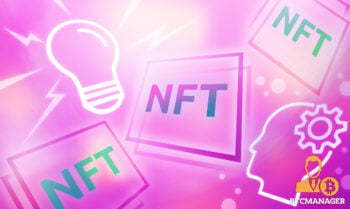2022-11-30 20:43 |
Phygital NFTs, a portmanteau of physical and digital, are non-fungible tokens tied to physical items in some way. They represent a broad category of NFTs that enable blockchain developers to invent new ways of combining our physical and digital worlds. As a result, they open the doors to connect IRL experiences with all sorts of digital counterparts, including those relating to the metaverse.
Typical classes of phygital NFTsIn essence, a phygital NFT is an umbrella term that covers any experience, service, object, product, etc., represented by or linked to an NFT.
Consider, for example, augmented reality (AR) technology. When combined with NFTs, AR developers can build immersive experiences that allow us to try on fashion items virtually or learn more about an art piece on our smartphones while visiting that piece in a physical gallery.
Redeemable NFTs are another class of phygital NFTs. They incorporate the unique identifier of a physical product into the metadata of the linked NFT. Upon redemption, owners receive the physical items delivered to their addresses.
Digital twins are also closely related to phygital NFTs. They are digital clones of physical entities that update with real-time data. For example, the luxury fashion house Givenchy released a collection in partnership with web3 art collective Felt Zine. It featured digital twins of six physical products.
After a successful milestone with the Chito x Givenchy NFTs in November 2021, the House’s latest collaboration with (b).STROY will feature digital twin NFTs for a selection of products.
Stay tuned. https://t.co/hql6MdQwOc
As they use blockchain as the underlying technology, we can deploy phygital NFTs to build trust between different parties. They are traceable and transparent, all thanks to the tamper-proof mechanisms of smart contracts. That’s why they can be applied to combat counterfeiting and prove authenticity. This is particularly necessary in luxury and art industries, where provenance is an issue of utmost importance.
Take, for example, the Marble platform that allows artists to mint NFTs from their physical art pieces to authenticate their work. Artists can showcase the final phygital NFTs through AR and VR. Marble emphasizes that phygital NFTs enable artists to embed customized royalty models and intellectual property rights into smart contracts. Consequently, the platform can offer a wide range of IP options.
Such applications of phygital NFTs are common in the food and beverage industry as well. Blockbar, a company that connects rare Whisky and blockchain, offers phygital NFTs that are backed by corresponding physical bottles. The company stores the bottles in its warehouse and ensures 100% authenticity until the purchaser of the NFT redeems it for the physical counterpart.
Burn to redeem or no burn?Phygital NFTs don’t always work the same in terms of redeeming. A widely applied format is burning to redeem, where the owner must burn the NFT to receive the physical product. A well-known collection deploying this method is the Nouns project which delivers physical glasses to the owners of NFTs. Upon burning, a “commemorative” NFT is sent to the collector’s wallet, and the physical delivery of the glasses is initiated.
There is also the option of redeeming with no burn. Here, projects replace the original NFT with another NFT after redeeming. Contrary to a commemorative one, in this case, the new NFT keeps its utilities; NFT is replaced in order to prevent multiple redemptions. Nike AR Hoodie by the RTFKT collection is an example of this. Collectors have already redeemed the original hoodies, but they can benefit from present and future uses of their NFTs.
Phygital NFTs work both ways.While the examples above mostly demonstrate situations where the users first buy an NFT and then redeem it for a physical product, it’s also possible to go for a physical-first route. For instance, the Givenchy collection mentioned above grants NFTs to the owners of the products purchased in physical stores.
Furthermore, some companies leverage the phygital concept in unexpected ways. For instance, Phygi allows its users to convert digital creations into physical items. Users upload their NFTs, choose a mockup, and the platform prints it into a high-quality physical poster.
The post Phygital NFTs explained appeared first on NFT News Today.
origin »TodayCoin (TODAY) íà Currencies.ru
|
|

